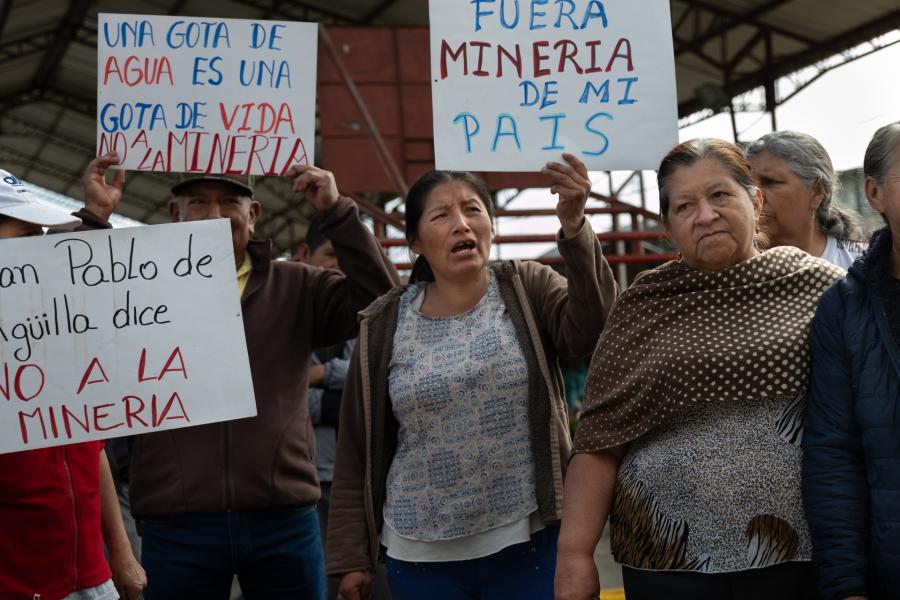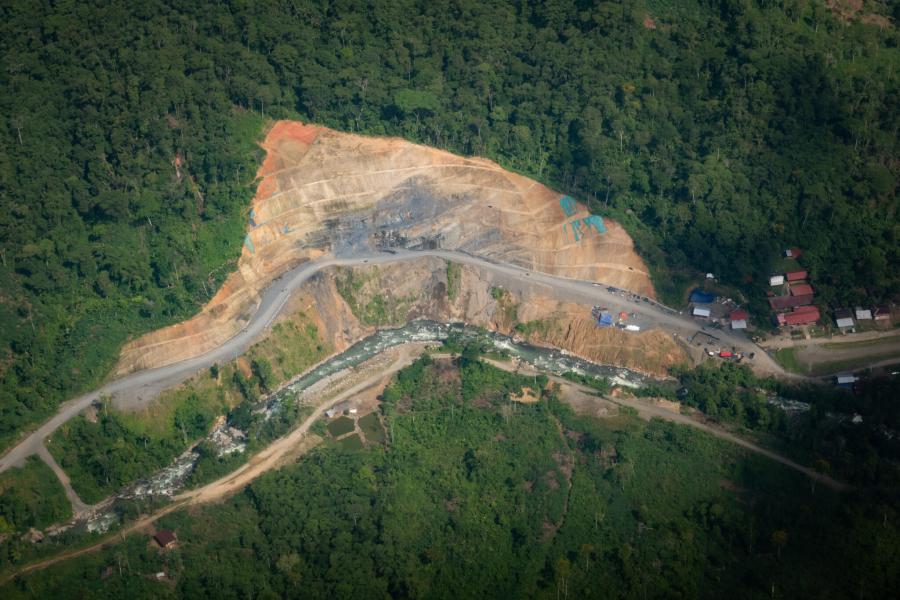Roberto Cachimuel is one of the founding members of Yarina, a family of musicians from Otavalo, Ecuador, that has received wide acclaim in their home country and abroad. Yarina, meaning “remembrance” in Cachimuel’s native language, Quichua, was formed in 1984 to promote native arts and culture during the formative years of Ecuador’s burgeoning indigenous political and cultural rights movement.
Today, Yarina’s captivating rhythms are heard on many of Ecuador’s mainstream radio stations and online at NativeRadio.com. Their songs incorporate jazz, blues, Latin, and Western classical elements into traditional Otavalan beats that are performed on violin, charango, bandolin, guitar, bass, panpipes, bombo, chacchas, and other traditional instruments. Yarina has become a regular feature at major events of the National Museum of the American Indian in Washington, D.C.; they played during the grand opening and at the museum’s first anniversary. Yarina achieved wide recognition for their album Nawi, which won the 2005 Native American Music Award for Best World Music and the 2005 Indian Summer Music Award in the folk category.
Based in Somerville, Massachusetts, Yarina has been performing at Cultural Survival bazaars for several years. I spoke with Roberto on August 19 about Yarina’s formation, their music, and how they are inspiring indigenous youth in Ecuador to appreciate Otavalan music and their own Quichua culture.
How did Yarina get started?
We are all from a family of 11 children—9 brothers and 2 sisters—and the unique thing is that we are all either musicians or dancers in our family. We come from the village of Otavalo (now a small town), which is one of the most interesting regions of Ecuador because most of the indigenous people there work with handicrafts and music.
When the group started in 1984, our father worked with the Federation of Indigenous and Campesinos of Imbabura. He attended many different meetings and conferences to represent the region and encouraged me and two of my older brothers to play music to entertain at these events. My father only played limited guitar, though—we had to teach ourselves how to play the instruments by watching other performers, listening to music, and learning by ear.
What makes Yarina distinctive?
The journey of Yarina since the beginning is something that only few have managed to do. We are all related to each other, and musically we are tight. We use traditional and contemporary instruments, keeping the traditional songs mixed with contemporary arrangements. Our music is mainly composed by the musicians themselves. We try to not play music that some already have the copyright to—if we work really hard we can make our original songs popular and more mainstream. In my culture, the music of Yarina is well-liked because we combine many instruments while keeping the traditional rhythm of the songs. All people can relate to our music—even if we are singing in Quichua or Spanish—because it has some world beats. Our music connects with the world community, and people from everywhere can get it. We are always inventing something, even within a song. This is what is most interesting within the group.
What is the key to appreciating and understanding Yarina’s music?
In our culture there is music for every ceremony: There is music for dancing or for when a child passes away; there is music for a wedding, music specifically for after the wedding, songs for a funeral procession or for the Dios de los Muertos (Day of the Dead). And there are totally different rhythms for every different ceremony.
When we do our performances we mix all of these different rhythms—some for dancing, and some for watching. There are no restrictions. Yarina is very different because we have adopted the improvisational form into our music. This makes it a little bit jazzier, so it is not as repetitive as traditional music really is. When we do a concert, the people know the songs and know when to dance and when to watch.
Do you return to Ecuador to give performances?
Oh yes; we have some schools that we work with in the villages where students don’t have access to the regular schools because they don’t have buses. These village students do not receive the same quality of education [as those in the cities], so we bring our concert to them. These events have a more major impact than the regular performances because people in the community typically hear the music on the radio, but they don’t usually have the resources to see live performances.
The young students really learn to appreciate the music; from comments we get from teachers, our work for them has had a good impact. We encourage the children to talk with each other in Quichua, which is our native language. Most of them are so influenced by the media, maybe the only access they have to information is on a black-and-white TV or a radio, but all the programming is in Spanish—so the kids even in the communities in the high mountains are not speaking Quichua. When we do the performances in the communities, we talk to them in Quichua, but they respond in Spanish. We try to encourage them to talk in their native language. This is one of our major purposes. No one hires us to do this kind of work. We invest in these types of programs ourselves. It’s a sacrifice, but we want to do this ourselves because we want the kids to have a good positive learning experience from us being there.
What type of music do you play in the communities?
We don’t want to make the performances in the communities only about the music. We also write plays that tell a story from our traditions. For example, we have some stories about the “village of the daybreak,” and we work with some people to act out the story while we play our instruments, like a musical. These are performed in both Spanish and Quichua. This helps the students become engaged in the performance because it relates to what kids know.
When we went down to Ecuador last spring, we did a couple of major of concerts in the cities, each in front of a couple of thousand people. These concerts become regular for us; but the most rewarding performances are those for the children in the communities. There is a level of interaction with children that you cannot find in regular concerts. The impact on the children has no price.
Yarina’s CDs are available at www.CDbaby.com/all/yarina and at Itunes.com
—Lisa Matthews is the program officer for Cultural Survival
Editor’s Note: Indigenous Arts department will appear in each issue of Cultural Survival Quarterly, celebrating indigenous artisans.


